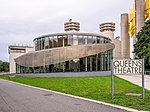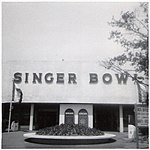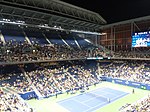Column of Jerash
1964 New York World's Fair1964 establishments in New York CityAncient Roman buildings and structuresBuildings and structures completed in the 2nd centuryBuildings and structures in Queens, New York ... and 6 more
Diplomatic giftsFlushing Meadows–Corona ParkJerash GovernorateMonumental columns in the United StatesRelocated buildings and structures in New York CityWorld's fair architecture in New York City

The Column of Jerash, also known as the Whispering Column of Jerash, is a monument in Flushing Meadows–Corona Park, Queens, New York City. The column was originally constructed in the second century AD under Roman rule in Jerash, Jordan. The column has been in Flushing Meadows–Corona Park since 1964, when it was gifted to the city by the king of Jordan for the 1964–65 New York World's Fair.: 152
Excerpt from the Wikipedia article Column of Jerash (License: CC BY-SA 3.0, Authors, Images).Column of Jerash
United Nations Avenue South, New York Queens County
Geographical coordinates (GPS) Address External links Nearby Places Show on map
Geographical coordinates (GPS)
| Latitude | Longitude |
|---|---|
| N 40.7465 ° | E -73.8423 ° |
Address
Column of Jerash
United Nations Avenue South
11368 New York, Queens County
New York, United States
Open on Google Maps











